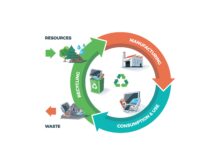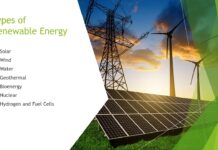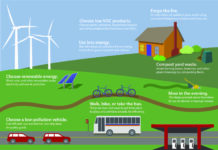The Perplexing and Bursting World of Renewable Energy
Renewable energy is derived from sources that are naturally replenished, such as sunlight, wind, rain, and geothermal heat. In recent years, there has been a significant increase in the use of renewable energy, driven by technological advancements, falling costs, and government policies aimed at reducing greenhouse gas emissions. Let’s take a closer look at some of the most promising sources of renewable energy and the drivers behind their growth.
The Promise of Solar Energy
Solar energy is one of the most promising sources of renewable energy, and it has seen tremendous growth in recent years. According to the International Energy Agency (IEA), solar photovoltaic (PV) capacity grew by 22% in 2020, despite the pandemic’s impact on the global economy. The IEA expects solar PV to become the cheapest source of electricity in many parts of the world by 2030. But what are the key drivers of this growth?
One of the main drivers of the growth in solar energy has been the falling cost of solar PV modules, which have declined by around 90% since 2010. This has made solar energy increasingly cost-competitive with fossil fuels, even in countries with abundant supplies of coal, oil, and gas. In addition, advances in energy storage technology, such as batteries, have made it possible to store solar energy for use during times when the sun is not shining. With these advances, solar energy is poised to be a major player in the energy market of the future.
Wind Energy’s Strong Growth
Wind energy is another rapidly growing source of renewable energy, with global wind capacity increasing by 19% in 2020, according to the IEA. The IEA expects wind energy to become the largest source of electricity in Europe by 2025, overtaking coal and gas. But what’s driving this growth?
Like solar energy, the cost of wind energy has fallen dramatically in recent years, thanks to advances in technology and economies of scale. Wind turbines have become more efficient and larger, allowing them to generate more electricity at lower costs. In addition, offshore wind farms have become increasingly common, providing a reliable source of electricity in areas with strong offshore winds. With these advances, wind energy is set to play a significant role in the transition to a more sustainable energy system.
Hydropower’s Importance
Hydropower is another well-established source of renewable energy, accounting for around 16% of global electricity generation. Hydropower is generated by the force of falling water, which spins turbines to generate electricity. While hydropower has been used for many decades, new technologies are making it more efficient and reliable.
For example, pumped-storage hydropower systems use excess electricity to pump water uphill to a reservoir, which can then be released to generate electricity when demand is high. This allows hydropower to provide a flexible source of electricity that can be easily scaled up or down to meet changing demand. With these advances, hydropower is set to remain an important source of renewable energy in the years to come.
The Bursting World of Sustainable Agriculture
Sustainable agriculture is an approach to farming that aims to produce food while minimizing the negative environmental and social impacts of agriculture. Sustainable agriculture seeks to promote soil health, biodiversity, and the responsible use of resources such as water and fertilizer. Let’s explore some of the sustainable agriculture practices that are gaining momentum.
The Benefits of Organic Farming
Organic farming also promotes biodiversity, as it avoids monoculture practices that can lead to the loss of biodiversity. While organic farming has been criticized for its lower yields compared to conventional farming, research has shown that it can be just as productive in certain situations, especially when it comes to growing certain crops such as fruits and vegetables. Organic farming also reduces the use of synthetic fertilizers and pesticides, which can have negative environmental impacts. As consumers become more aware of the benefits of organic farming, demand for organic products is likely to increase, creating opportunities for farmers to adopt more sustainable practices.
The Integration of Agroforestry
Agroforestry is another sustainable agriculture practice that involves integrating trees into agricultural landscapes. Agroforestry can help improve soil health, prevent erosion, and promote biodiversity. It can also provide additional benefits such as shade for crops, habitat for wildlife, and a source of timber and other products. By integrating trees into farming systems, agroforestry can help create more diverse and resilient agricultural landscapes.
The Precision of Precision Agriculture
Precision agriculture is a technology-driven approach to farming that seeks to optimize crop production while minimizing inputs such as water, fertilizer, and pesticides. Precision agriculture uses a variety of tools, such as sensors, drones, and GPS mapping, to collect data about soil conditions, plant growth, and weather patterns. This data is then used to make precise decisions about when and where to apply inputs, such as irrigation and fertilizers. With precision agriculture, farmers can reduce waste, increase yields, and minimize the environmental impact of their operations.
The Perplexing World of Green Technology
Green technology, also known as clean technology, refers to technologies that are designed to minimize the negative environmental impacts of human activities. Green technology can encompass a wide range of technologies, from renewable energy to water conservation to waste management. Let’s take a closer look at some of the most promising green technologies.
The Promise of Electric Vehicles
One of the most well-known examples of green technology is electric vehicles (EVs). EVs are vehicles that are powered by electricity rather than fossil fuels. EVs are becoming increasingly popular, thanks to improvements in battery technology and falling costs. EVs can help reduce greenhouse gas emissions and air pollution from the transportation sector, which is one of the largest sources of emissions globally. With advances in battery technology and charging infrastructure, EVs are poised to become a more common sight on our roads.
The Efficiency of Smart Grids
Smart grids are another example of green technology that can help reduce greenhouse gas emissions by making the electricity grid more efficient and flexible. Smart grids use sensors and other technologies to monitor electricity usage in real-time, allowing for better management of supply and demand. This can reduce the need for expensive and polluting peaker plants, which are used to meet peak electricity demand. With smart grids, we can create a more efficient and resilient energy system that can better integrate renewable energy sources.
The Promise of a Circular Economy
The circular economy is a concept that aims to create a regenerative and sustainable economic system by minimizing waste and maximizing the use of resources. In a circular economy, materials and products are reused and recycled as much as possible, rather than being disposed of in landfills or incinerators. By creating a more circular economy, we can reduce waste, conserve resources, and create new economic opportunities.
Conservation Efforts for a Sustainable Future
Conservation efforts refer to actions taken to protect and preserve natural resources and ecosystems. Conservation efforts are critical for maintaining biodiversity and ecosystem services, such as clean air and water, that are essential for human well-being.
The Importance of Protected Areas
Protected areas, such as national parks and wildlife reserves, are one of the most well-known forms of conservation efforts. Protected areas are designated areas where natural resources and biodiversity are preserved and protected from human activities such as logging, mining, and agriculture. Protected areas can also provide opportunities for ecotourism and outdoor recreation, which can contribute to local economies. By protecting these areas, we can ensure that future generations can enjoy the benefits of natural ecosystems.
The Necessity of Species Conservation
Species conservation involves efforts to protect and preserve endangered species and their habitats. Species conservation can involve a variety of measures, such as habitat restoration, captive breeding, and reintroduction programs. Species conservation is critical for maintaining biodiversity and preventing the loss of species that play important ecological roles. By protecting endangered species, we can help maintain the balance of natural ecosystems and ensure the survival of these species for future generations.
Conclusion: A Perplexing and Bursting Future
In conclusion, renewable energy, sustainable agriculture, green technology, and conservation efforts are all critical components of creating a more sustainable future. These areas are rapidly evolving, with new technologies and practices emerging all the time. As we continue to tackle the challenges of climate change, resource depletion, and environmental degradation, we will need to embrace the complexity and diversity of these fields to find effective solutions. By doing so, we can create a world that is bursting with innovation and sustainability.
Google News | Telegram
















